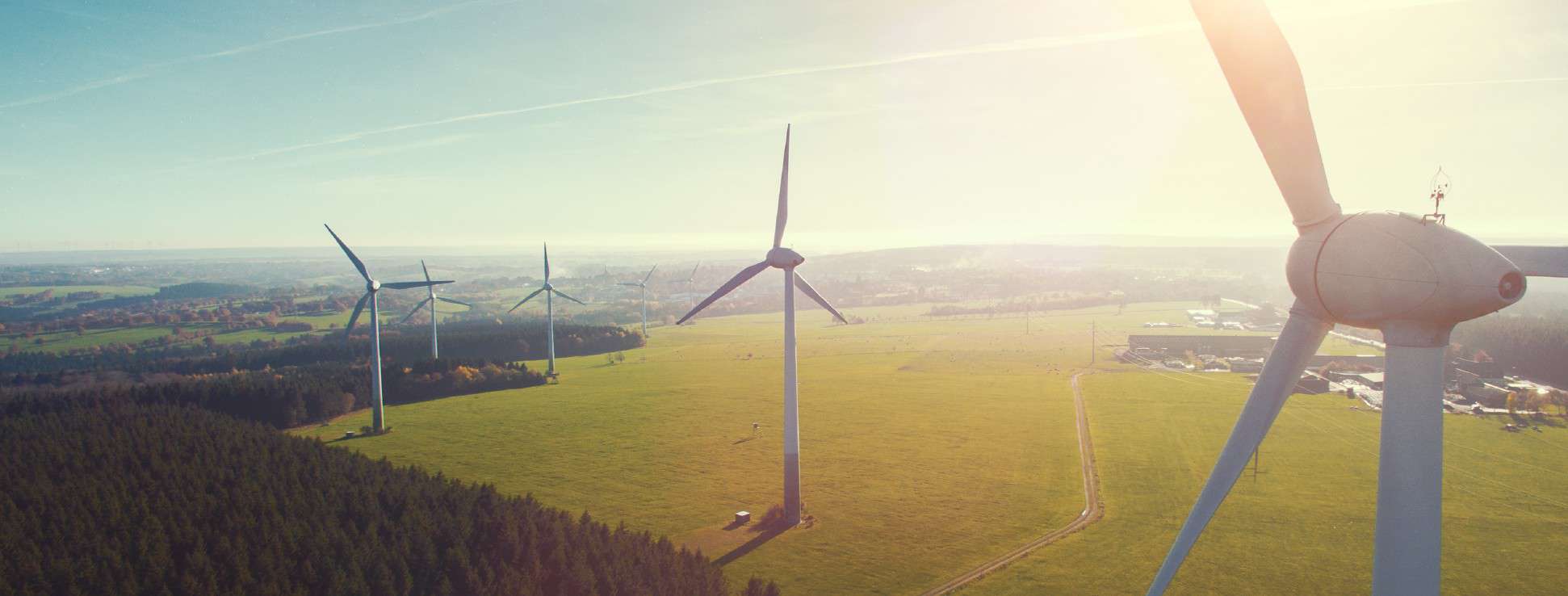
Summer challenges on the Irish power system
Introduction
While warm temperatures and light winds in Ireland this week have been welcomed by many, they have also contributed to challenging conditions on the electricity grid. The six-day period from Sunday 10th July to Friday 15th July has seen demand response providers called on to support the Irish grid on five occasions. A System (Amber) Alert notification was also in place for one of these occasions, recognising a potential generation shortfall in Ireland.
Historically, such stress events have typically only occurred over the evening peak period (4-7pm) on weekdays during winter months when system demand is highest. However, as highlighted previously, several recent instances outside such periods are indicative of the evolving challenges as the power system transforms to accommodate increasing renewables. Scarcity events are increasingly wind driven.
Nevertheless, multiple demand response dispatches in a single week during the middle of summer, including one of which on a Sunday, remains highly unusual.
There are a variety of very different power system conditions that can lead to the market calling on demand response providers; driven by complex and interacting factors including system demand, wind generation, interconnector flows to/from Great Britain, sudden generator failures (“trips”), and planned or forced generator maintenance outages. While recognising the highly complex and dynamic nature of the challenge faced by EirGrid, in managing the power system in real time, this article presents some insights from VIOTAS into some of the factors which played a role in the events seen on the Irish grid during the past six days.
Ultimately, the situation has been principally driven by low system margins between available generation capacity and system demand, caused by multiple power plants being on scheduled or forced maintenance outages, coincident with low levels of wind generation.
Sunday 10th July
As is typical during the summer months, a significant number of conventional generating plants were on outage to complete essential maintenance ahead of the winter period when system demand is highest. According to EirGrid’s all-island outage plan, in excess of 2,200 MW of dispatchable generation capacity (including a mix of coal, oil, open and combined cycle gas fired units) was on scheduled or forced outage. The 450 MW Moyle interconnector between Northern Ireland and GB was also on a scheduled outage.
The units on outage included two of the four highly flexible units at Turlough Hill pumped-hydro storage plant, which are typically used by EirGrid to assist with ramping etc. over the course of most days. When these units are not available, the likelihood is increased of EirGrid having to call on additional flexibility, from demand response aggregators like VIOTAS, to respond on demand and quickly adjust their output.
While planned outages are carefully scheduled, additional forced outages to repair emergent issues during a period when multiple plants are already offline can cause tight system margins even during non-peak periods. EirGrid data shows that forced outage rates in Ireland have increased significantly in recent years, increasing the likelihood of several large units being simultaneously offline. This is likely driven by the ageing fleet of conventional generating units, and the increasingly flexible operating regime required of them, with more starts/stops, more frequent ramping, etc.
EirGrid dispatched multiple Demand Side Units in Ireland at approximately 5pm to provide demand response. This coincided with very low wind generation in Ireland of approximately 90 MW (less than 3% of the installed capacity of >4,300 MW). This was at the same time as the East-West Interconnector (500 MW interconnector between North Dublin and North Wales) transitioned from importing 500 MW from GB at 3pm to exporting 342 MW to GB at 6pm, creating a significant ramping requirement of approximately 800 MW from other generating units within Ireland over a 3-hour period.
Interconnection with GB enables Ireland to export power during periods of surplus renewable generation as well as to depend on power imports when required. However, tight system conditions in GB can limit the ability to rely on power imports, and the interconnectors may even be scheduled to export in certain situations. With power markets coupled across Europe, challenging interconnector flow schedules driven by international market dynamics are a knock-on impact of the ongoing crisis in Ukraine and the associated crisis and unprecedented volatility being felt across energy markets worldwide.
EirGrid and SONI also have to operate the power system within a number of operational constraints. One such operational constraint, as a security of supply measure, prevents approximately 440 MW of distillate fired OCGT (Open Cycle Gas Turbine) units from being run unless the system is in, or close to, System Alert. This prevents these units from being run purely to meet a ramping demand such as the interconnector swinging from import to export and means other flexible units, such as demand response providers, are more likely to be called upon to play a critical role in meeting the national demand for electricity.
Monday 11th July
In addition to the scheduled / forced outages from the previous day, an additional large generation unit, the Dublin Bay CCGT (Combined Cycle Gas Turbine) with an installed capacity of 405 MW, reported a forced outage from 12pm. Initially, the unit reported an expected return to service on Thursday 14th July.
Despite this additional unit being forced offline, wind generation levels averaged in excess of 1,100 MW between 8am and 8pm on Monday 11th July, more than 1,000 MW higher than the previous day. As a result, Monday 11th July saw no demand response units dispatched, nor any System Alerts issued.
Tuesday 12th July
With the Dublin Bay CCGT remaining on forced outage, and low wind generation of approximately 300 MW in Ireland, EirGrid issued a System (Amber) Alert at 2:30pm, recognising a potential generation shortfall.
To maintain grid stability, EirGrid took a number of actions including cancelling the planned maintenance of two 90 MW Aghada OCGT units. However, conditions remained challenging and were exacerbated by a sudden trip on one 90 MW gas turbine unit at Aghada at approximately 3pm.
EirGrid was forced to take exceptional actions including dispatching a number of demand response units at approximately 4:30pm and taking a number of countertrades to switch the East-West interconnector to import from GB over the evening peak period. Expensive interconnector countertrades between 3:30 – 5:30pm exceeded the capacity market Strike Price, triggering Reliability Option Difference Charges.
The System Alert was lifted at 6:25 PM, with demand starting to decrease, wind generation increasing to approximately 800 MW, and the successful return to service of the Aghada OCGT unit.
Wednesday 13th July
Similar conditions on the grid remained on Wednesday with wind generation forecast to be less than 300 MW for most of the morning. At approximately 6.40am, one of the two operational 73 MW Turlough Hill pumped storage units (the other two remaining on outage) failed to synchronise to the grid when instructed, exacerbating the situation at the same time as the significant morning pick-up in system demand.
As a result, several demand response providers were again called upon to assist at approximately 9am, supporting the generation ramp up to meet rising demand.

Thursday 14th July
Dublin Bay CCGT was expected to return partially for 243 MW during the course of the day, but its return was subsequently postponed until 12th August. Tight generation margins remained on the grid and at 4:30pm a number of demand response providers were again dispatched after the East-West interconnector stopped importing from the UK and with wind generation in Ireland standing at approximately 450 MW.
Friday 15th July
With similar conditions to the previous days continuing to endure on the grid, and wind generation in Ireland standing at approximately 220 MW, demand response providers including VIOTAS were once again called upon – this time in both Ireland and Northern Ireland – to support the grid during the early evening on Friday 15th, from approximately 4:30pm onwards. While it subsequently returned to service at approximately 3:20pm, a sudden trip on one 90 MW OCGT units at Aghada at approximately 2.15pm is illustrative of the reliability challenges faced by many older conventional units.
Outlook
Conditions on the grid remain tight, and with no significant units expected to return to service in the coming days, further challenging periods cannot be ruled out.
In the medium term, VIOTAS and many other stakeholders are carefully watching developments as we move towards winter 2022/23 and beyond. In addition to the return to service of units currently on outage, a number of other important actions are under development in Ireland, including the planned deployment of 210 MW of emergency temporary generation at a site in Dublin from early 2023, the procurement of significant volumes of new gas fired generation capacity, and the potential temporary extension to the operation of up to 1,200 MW of existing capacity which would otherwise retire.
With unprecedented volatility and highly coupled energy and electricity markets across Europe, forecasting future energy market dynamics is extremely difficult. However, whatever transpires, VIOTAS and its customers will be there to provide a vital safety net to the power system and help avoid any potential supply shortfalls and ultimately blackouts.
Conclusion
Calling on demand response providers to support on five occasions during a mid-summer week is highly exceptional. However, this is illustrative of the compounding challenges of very high renewable deployments at the same time as experiencing significant electricity demand growth, retiring several large conventional power stations, and facing increased forced outage rates on an ageing fleet that remain operational. The war in Ukraine has further intensified the situation.
Demand response has again proven itself by quickly and reliably helping EirGrid manage the system under the most challenging conditions. VIOTAS would like to thank all our loyal customers for responding and supporting the grid over the past week when we all needed it the most. It’s thanks to our customers, that VIOTAS can continue to play a crucial role in decarbonising and securing the power system!
Published: Friday 15th July 2022, 17:00, written by Jon Sedgwick and Ayodele Bickersteth, VIOTAS Market Operations



